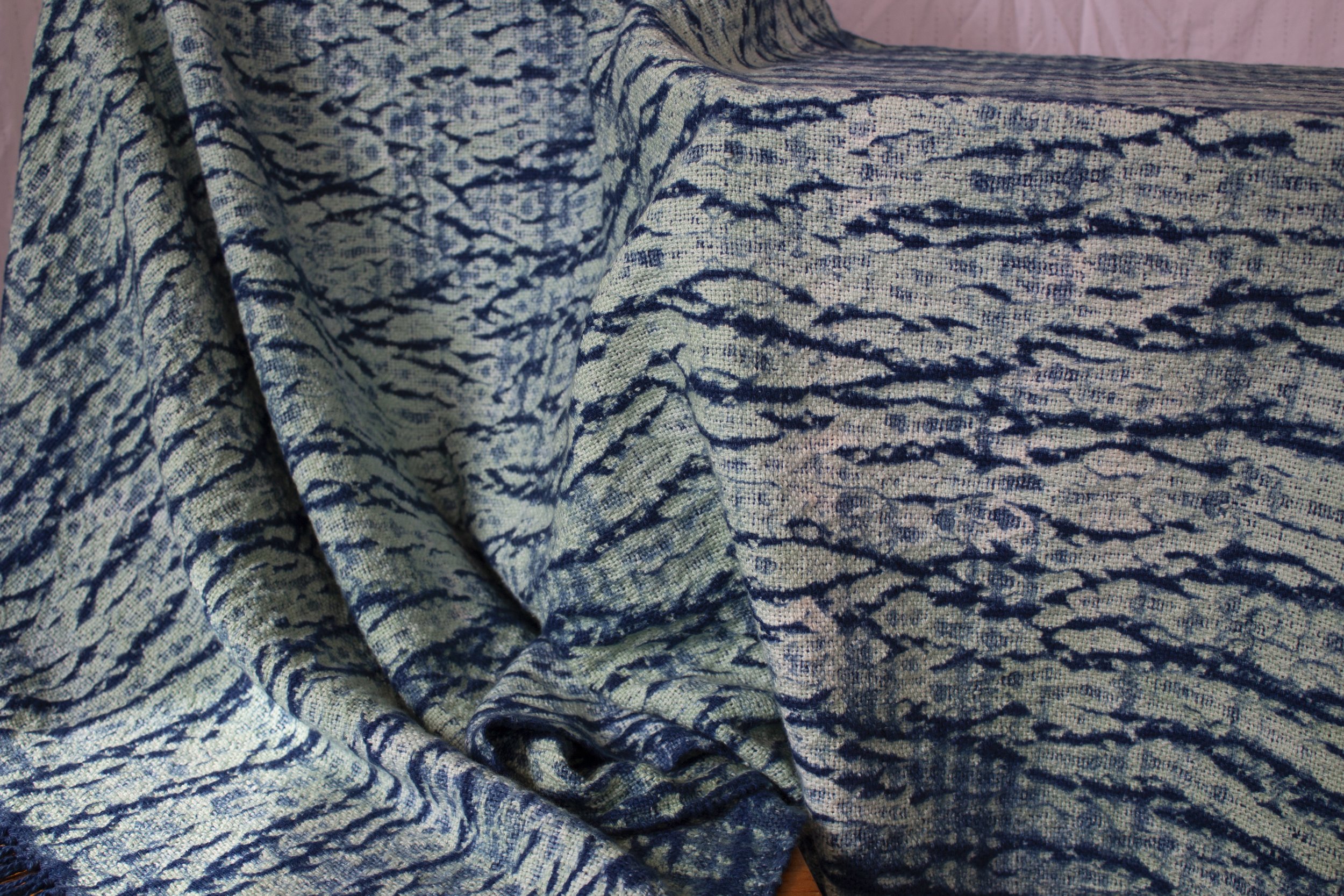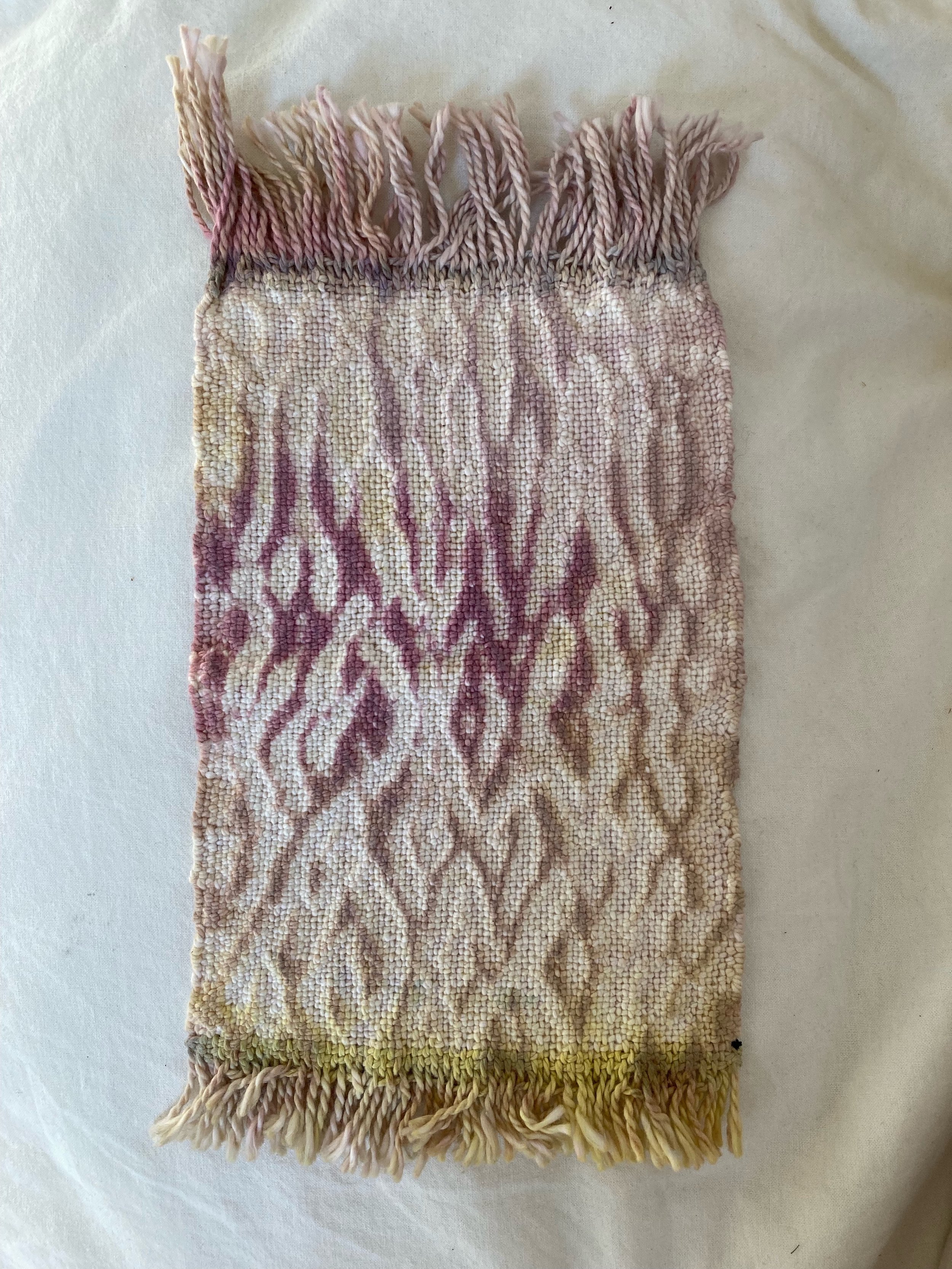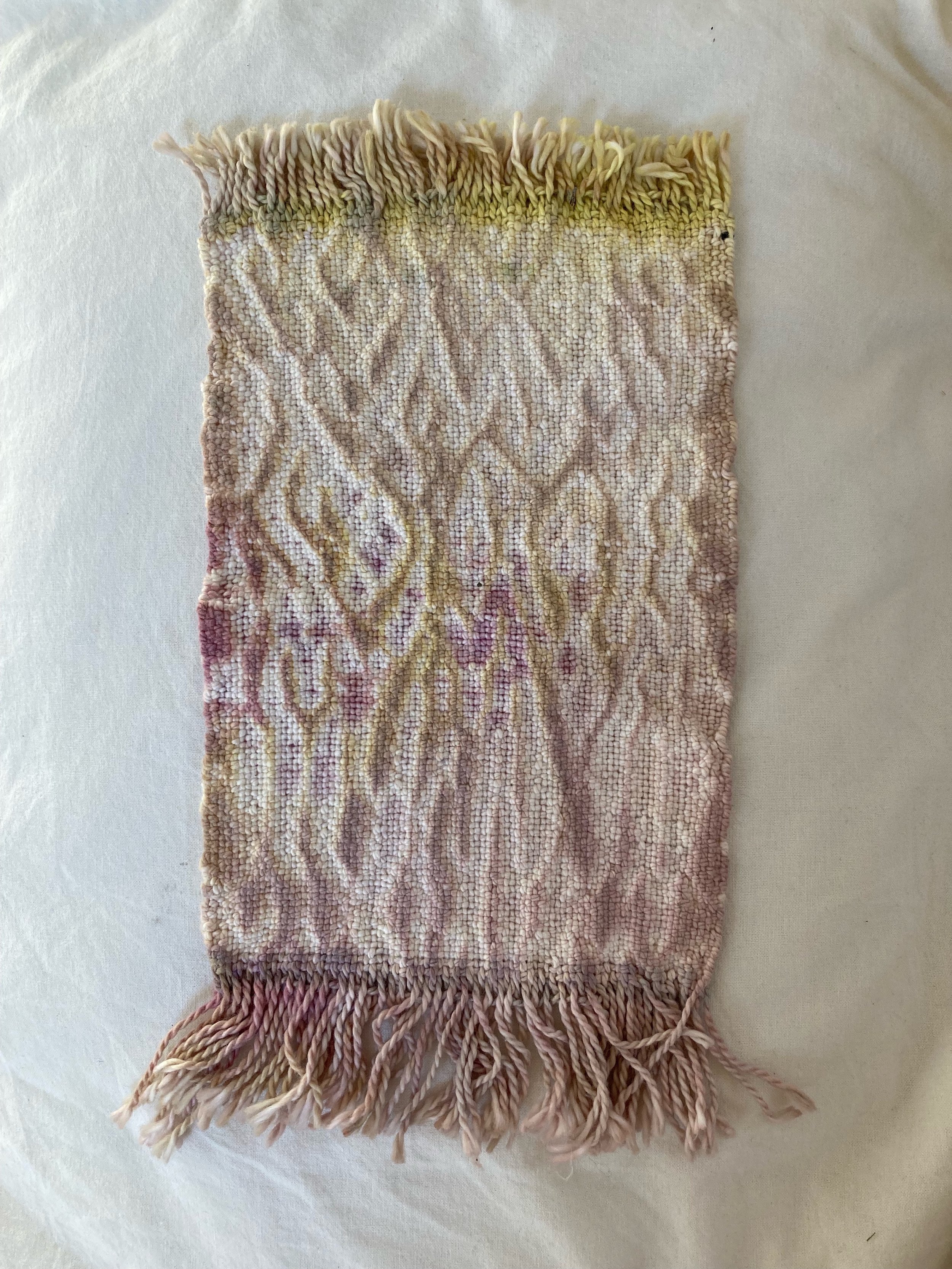
Shibori
Shibori weaving, a variation of the shibori dyeing technique perfected in 17th-19th century Japan, is my favorite type of textile to create.





In traditional weaving styles, warp and weft strings interlock in various ways to make distinct patterns. Conversely, shibori weaving uses dyes to create a pattern in the fabric. The textile is woven in plain weave, with single weft shots woven in a preferred pattern interspersed in the plain weave.
Weft shots in a pattern are placed between every four plain-weave weft shots. I generally chose a birdseye design because I like the distinct diamond look left behind after dyeing the fabric.
By looking at the textile from an angle, it is possible to see the birdseye pattern forming in the colorful weft shots. But, can you see the diamond pattern hidden in the weaving?
Once off the loom, I tugged on the birdseye pattern weft strings, cinching the material into a very bunched-up fabric. The textile was then dumped into a dye pot. Once the dye dried, the fabric was let out, and the birdseye pattern weft shots were pulled out of the fabric, leaving behind a textile that is only plain weave but is dyed in a birdseye pattern!








What I find particularly compelling and beautiful about shibori weaving is that each piece is unique. Even within a single textile, each dyed shape has a significant degree of variation. Some diamonds are very distinct, while others blend into a more obscure form. The effect is almost like the imprint of a snakeskin across the textile. Therefore, there is no way to replicate another piece similarly.
Double-Dipped Shibori Blanket.
More complicated than the previous shibori pieces, I used multiple dye sessions to achieve the intricate pattern for this blanket. After pulling this blanket off the loom, I loosely tied it up and dipped it in a light green immersion bath. Once dried, the blanket was a beautiful mottled mint green hue and ready for cinching. After the blanket was cinched, I did multiple rounds of dyes in an actual indigo vat. Once opened and ironed, the blanket revealed a beautiful white, green and blue mix.








Like with other shibori weaves, the fabric is entirely composed of plain weaves, while the pattern is dyed on top. What I particularly love about this piece is the border the indigo dye gives the blanket. I became interested in shibori weaving after taking an Introductory Weaving Course with Jeanne Steiner at Colorado College. Throughout the rest of my time as an undergraduate student, my work primarily focused on my shibori technique: how to get a tighter or looser pattern, adding multiple layers of dyes, and creating bigger and bigger textiles that still had distinct patterns dyed into them. Although I have been branching out recently, shibori weaving is still near and dear to my heart.


